
Enchanting Central Europe: 8-Days in Prague, Vienna & Budapest
 8 Day Tour of Prague, Vienna and Budapest
8 Day Tour of Prague, Vienna and Budapest
Overview
Trip Map
Itinerary
Inclusions
Reviews







8 Days 7 Nights
Best Time: Jan-Dec
Cultural Exploration
History Buffs
Explore the heart of Central Europe with an unforgettable journey through Prague, Vienna, and Budapest. Wander the historic streets of Prague, marveling at the grandeur of Prague Castle and the charming Little Quarter. In Vienna, immerse yourself in imperial splendor with visits to Hofburg Palace and the stunning Belvedere Palace. End your adventure in Budapest, where you’ll discover the majestic architecture of Buda Castle and rejuvenate in the iconic Széchenyi Baths. Each city offers guided tours and detailed travel guidance through our mobile app, ensuring a seamless and enriching experience.
- Follow the royal coronation route across the Charles Bridge to Prague Castle on a guided walk.
- Follow twisting lanes through Vienna's Inner City to the stunning gothic St. Stephen’s Cathedral.
- See Klimt’s masterpiece The Kiss & take the lift to inspect the dome of Vienna’s Karlskirche.
- Enjoy breathtaking views from the Fisherman’s Bastion & shop in Budapest’s historic Central Market.
- Relax and rejuvenate in Budapest’s iconic Széchenyi Baths and explore nearby Heroes' Square.
Explore the heart of Central Europe with an unforgettable journey through Prague, Vienna, and Budapest. Wander the historic streets of Prague, marveling at the grandeur of Prague Castle and the charming Little Quarter. In Vienna, immerse yourself in imperial splendor with visits to Hofburg Palace and the stunning Belvedere Palace. End your adventure in Budapest, where you’ll discover the majestic architecture of Buda Castle and rejuvenate in the iconic Széchenyi Baths. Each city offers guided tours and detailed travel guidance through our mobile app, ensuring a seamless and enriching experience.
- Follow the royal coronation route across the Charles Bridge to Prague Castle on a guided walk.
- Follow twisting lanes through Vienna's Inner City to the stunning gothic St. Stephen’s Cathedral.
- See Klimt’s masterpiece The Kiss & take the lift to inspect the dome of Vienna’s Karlskirche.
- Enjoy breathtaking views from the Fisherman’s Bastion & shop in Budapest’s historic Central Market.
- Relax and rejuvenate in Budapest’s iconic Széchenyi Baths and explore nearby Heroes' Square.

Prague Castle
Castles & Chateaux

Charles Bridge
Historic Landmarks

Wenceslas Square
European History

Hofburg Palace
Castles & Chateaux

Schönbrunn Palace & Zoo
Parks & Gardens

Hungarian Parliament
Architecture

National Museum
Museums & Galleries

Central Market
Street Markets

Castle Hill
Castles & Chateaux
Must see sights

Prague Castle
Castles & Chateaux

Charles Bridge
Historic Landmarks

Wenceslas Square
European History

Hofburg Palace
Castles & Chateaux

Schönbrunn Palace & Zoo
Parks & Gardens

Hungarian Parliament
Architecture

National Museum
Museums & Galleries

Central Market
Street Markets

Castle Hill
Castles & Chateaux
Starting from
$1425
per person
 Not included
Not included Secure Your Customizable Trip
Enter your details to embark on a journey that can be tailored just for you.
Start
Travelers
0 travelers
Add Room
Remove Room
Preferred Hotel Stars
Select Hotel Stars
Craft Your Own Itinerary
Select your interests and destinations for a trip plan inspired by you.
Enchanting Central Europe Trip - Map & Itinerary
Enable/Disable Map Scrolling
Click To Make Map Interactive

Enchanting Central Europe Trip Timeline
 Edit Details
Edit DetailsArrival
2 nights
Prague
Czech Republic
Train: 4.5h
2 nights
Vienna
Austria
Train: 3h
3 nights
Budapest
Hungary
Departure
Day-By-Day Itinerary of Enchanting Central Europe Trip
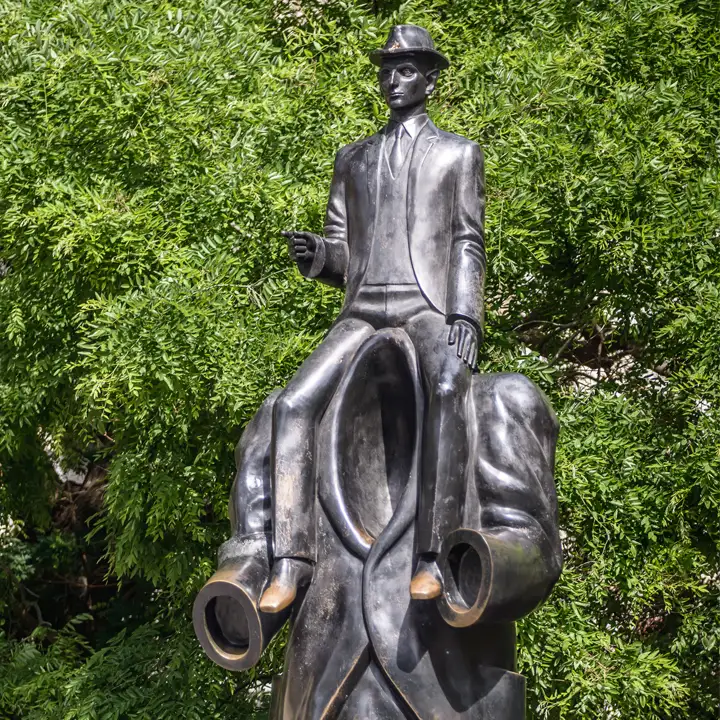
Day 1
Arrive Prague
Day 1
Arrive Prague




To Be Determined
Airport Transfer
Prague has one main airport, Václav Havel Airport Prague, where almost all visitors arrive. Taxis are available directly at the terminal exit, or you can arrange a private transfer for added convenience.

Day 1
Arrive Prague


Day 1
Arrive Prague





To Be Determined:
Airport Transfer
Mid-Day/Afternoon:
Jewish Quarter
Afternoon/Late Afternoon:
Old Town
Late Afternoon/Early Evening:
The Little Quarter


Day 2
Prague
Day 2
Prague




9:00 AM - 12:30 PM
Royal Route Guided Tour
On this charming guided walk, you will explore the Prague Castle, the largest castle complex in all of Europe. To reach the castle you will trace the Royal Coronation Route and cross the Charles Bridge, whose “speaking stones” reveal the amazing and often cruel history that occurred there. Your tour guide will then take you either through the castle courtyards and into the dramatic St. Vitus Cathedral in the center of the castle complex, or through the upper part of the castle district around the oversized palaces of the old Catholic nobility and the top of the Castle Steps for incomparable views over the red rooftops of the Little Quarter.

Charles Bridge
Cross the river dividing Prague's most historic neighborhoods, and experience one of Europe's most iconic landmarks.
Show More

Maltese Square & Lennon Wall
See a historic wall that has been covered in John Lennon-inspired graffiti since Communist days.
Show More

Prague Castle
Prague Castle is one of the main attractions in Prague and is also the largest castle complex in the world.
Show More

Charles Bridge
Cross the river dividing Prague's most historic neighborhoods, and experience one of Europe's most iconic landmarks.
Show More

Maltese Square & Lennon Wall
See a historic wall that has been covered in John Lennon-inspired graffiti since Communist days.
Show More

Prague Castle
Prague Castle is one of the main attractions in Prague and is also the largest castle complex in the world.
Show More

Charles Bridge
Cross the river dividing Prague's most historic neighborhoods, and experience one of Europe's most iconic landmarks.
Show More
prev
next

Day 2
Prague

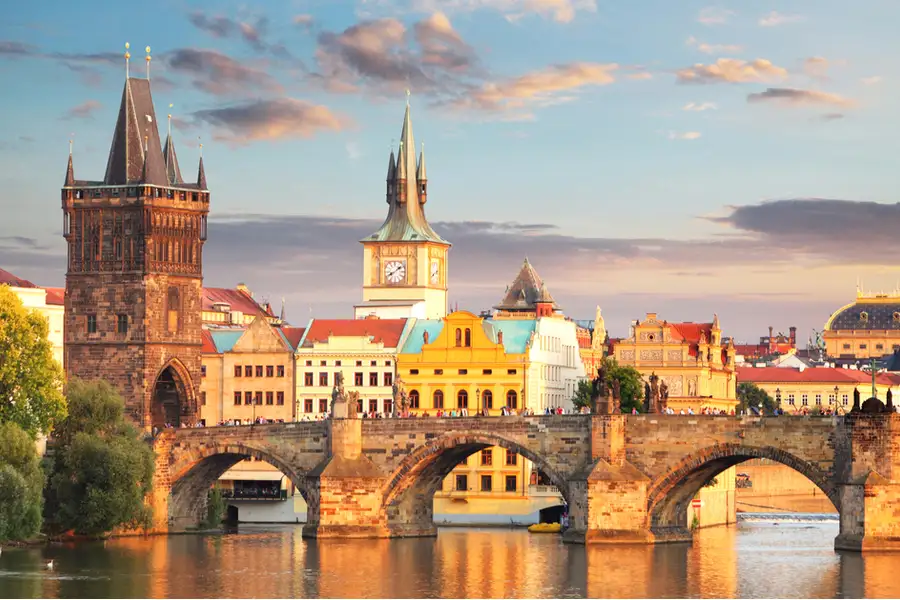
Charles Bridge
 Highlight of Royal Route Guided Tour
Highlight of Royal Route Guided TourCross the river dividing Prague's most historic neighborhoods, and experience one of Europe's most iconic landmarks.
Bridge construction began in 1357 under King Charles IV (hence the name), and it was the only bridge across the Vltava River until 1841. 30 baroque statues of saints line the bridge, and it is filled with street artists and entertainers. Not to be missed.

Maltese Square & Lennon Wall
 Highlight of Royal Route Guided Tour
Highlight of Royal Route Guided TourSee a historic wall that has been covered in John Lennon-inspired graffiti since Communist days.
The wall has been covered in graffiti since the 1960s, and during Communism anti-regime sentiment was common. John Lennon's assassination inspired grafitti reflecting his song, Imagine, which earned the wall its current moniker. It is now a favorite gathering place for tourists, and musicians sometimes congregate there as well. Just around the corner is the Maltese Square, which is one of Prague's more quaint and relaxed public spaces, despite being just off the main tourist route.

Prague Castle
 Highlight of Royal Route Guided Tour
Highlight of Royal Route Guided TourPrague Castle is one of the main attractions in Prague and is also the largest castle complex in the world.
The Prague Castle is the largest castle complex in the world with structures dating back to the 9th century. The St Vitus Cathedral and Basilica of St George can be found within the castle walls. The Prague Castle also includes several gardens, palaces, and a monastery. This castle was the seat of power for the Kings of Bohemia, Holy Roman Emperors, and presidents of former Czechoslovakia. Prague Castle is a UNESCO world heritage site and is one of the most visited places in the country.

Charles Bridge
 Highlight of Royal Route Guided Tour
Highlight of Royal Route Guided TourCross the river dividing Prague's most historic neighborhoods, and experience one of Europe's most iconic landmarks.
Bridge construction began in 1357 under King Charles IV (hence the name), and it was the only bridge across the Vltava River until 1841. 30 baroque statues of saints line the bridge, and it is filled with street artists and entertainers. Not to be missed.

Maltese Square & Lennon Wall
 Highlight of Royal Route Guided Tour
Highlight of Royal Route Guided TourSee a historic wall that has been covered in John Lennon-inspired graffiti since Communist days.
The wall has been covered in graffiti since the 1960s, and during Communism anti-regime sentiment was common. John Lennon's assassination inspired grafitti reflecting his song, Imagine, which earned the wall its current moniker. It is now a favorite gathering place for tourists, and musicians sometimes congregate there as well. Just around the corner is the Maltese Square, which is one of Prague's more quaint and relaxed public spaces, despite being just off the main tourist route.

Prague Castle
 Highlight of Royal Route Guided Tour
Highlight of Royal Route Guided TourPrague Castle is one of the main attractions in Prague and is also the largest castle complex in the world.
The Prague Castle is the largest castle complex in the world with structures dating back to the 9th century. The St Vitus Cathedral and Basilica of St George can be found within the castle walls. The Prague Castle also includes several gardens, palaces, and a monastery. This castle was the seat of power for the Kings of Bohemia, Holy Roman Emperors, and presidents of former Czechoslovakia. Prague Castle is a UNESCO world heritage site and is one of the most visited places in the country.

Charles Bridge
 Highlight of Royal Route Guided Tour
Highlight of Royal Route Guided TourCross the river dividing Prague's most historic neighborhoods, and experience one of Europe's most iconic landmarks.
Bridge construction began in 1357 under King Charles IV (hence the name), and it was the only bridge across the Vltava River until 1841. 30 baroque statues of saints line the bridge, and it is filled with street artists and entertainers. Not to be missed.
prev
next


Day 3
Prague to Vienna
Day 3
Prague to Vienna





Morning
New Town
Despite being 700 years old, the New Town (Nové Město) is the youngest of the original five independent towns that made up Medieval Prague. The heart of New Town is one of the three original markets around which the town was planned, Wenceslas Square. Not fully given over to tourism like the Old Town, the New Town combines a historic atmosphere with the daily commercial and social life of locals, making it a great place to get a taste of the real Prague.

Dancing House
Stroll down the river to find this curvaceous office block designed by Frank Gehry, and whi msically nicknamed Fred & Ginger.
Show More

National Theater
Experience nationally-sponsored ballet & opera in a magnificent venue.
Show More

National Museum
Explore an interesting museum collection in a grand building completed in 1891.
Show More

Wenceslas Square
Experience a mishmash of interesting architecture on Wenceslas Square, Prague's main commercial center.
Show More

Municipal House
Tour a breathtaking art nouveau venue and stay for a concert, opera, or ballet.
Show More

Dancing House
Stroll down the river to find this curvaceous office block designed by Frank Gehry, and whi msically nicknamed Fred & Ginger.
Show More

National Theater
Experience nationally-sponsored ballet & opera in a magnificent venue.
Show More

National Museum
Explore an interesting museum collection in a grand building completed in 1891.
Show More

Wenceslas Square
Experience a mishmash of interesting architecture on Wenceslas Square, Prague's main commercial center.
Show More

Municipal House
Tour a breathtaking art nouveau venue and stay for a concert, opera, or ballet.
Show More

Dancing House
Stroll down the river to find this curvaceous office block designed by Frank Gehry, and whi msically nicknamed Fred & Ginger.
Show More
prev
next

Day 3
Prague to Vienna


Dancing House
 Highlight of New Town
Highlight of New TownStroll down the river to find this curvaceous office block designed by Frank Gehry, and whi msically nicknamed Fred & Ginger.
There is no tour of the interior, so most visitors just snap a photo and head out. However, there is a restaurant and bar at the top called Ginger&Fred. For a spectacular view of the city check out the terrace on the top floor (only for paying customers).

National Theater
 Highlight of New Town
Highlight of New TownExperience nationally-sponsored ballet & opera in a magnificent venue.
This concert hall is Prague's most prestigious, and it is not only a symbol of the 19th century Czech national revival but also arguably one of the most beautiful concert venues in Europe. Unfortunately, tours are not regularly offered, but you may attend an opera or ballet if you purchase tickets in advance. The riverfront near the concert hall is one of the most photographed spots in Prague.

National Museum
 Highlight of New Town
Highlight of New TownExplore an interesting museum collection in a grand building completed in 1891.
The recently renovated and improved National Museum is fronted by the iconic equestrian statue of "good king Wenceslas". Beyond it's dramatic exterior you'll find a grand staircase which is a highlight of any visit. Founded in 1818, the museum played a major role in bringing natural science and history to the common man, and also played an important part in the Czech national revival occurring in the 19th century.

Wenceslas Square
 Highlight of New Town
Highlight of New TownExperience a mishmash of interesting architecture on Wenceslas Square, Prague's main commercial center.
The square, which could also be described as a wide boulevard, is named after the Patron Saint of Bohemia, whose statue can be seen at the top of the square. Many historical events have taken place here, including the demonstrations of the Velvet Revolution in 1989, which resulted in the collapse of the Communist regime. Today the square is lined by department stores, hotels, and office buildings, many of them notable architectural highlights of the 19th, 20th, and 21st century.

Municipal House
 Highlight of New Town
Highlight of New TownTour a breathtaking art nouveau venue and stay for a concert, opera, or ballet.
The stunning concert hall is open for tours and hosts performances on most evenings. The main hall is painted by famous Czech artists including Alfons Mucha. A beautiful cafe and restaurant are also housed in the building, and you can find one of Prague's most ornate pubs in the cellar (the "American Bar").

Dancing House
 Highlight of New Town
Highlight of New TownStroll down the river to find this curvaceous office block designed by Frank Gehry, and whi msically nicknamed Fred & Ginger.
There is no tour of the interior, so most visitors just snap a photo and head out. However, there is a restaurant and bar at the top called Ginger&Fred. For a spectacular view of the city check out the terrace on the top floor (only for paying customers).

National Theater
 Highlight of New Town
Highlight of New TownExperience nationally-sponsored ballet & opera in a magnificent venue.
This concert hall is Prague's most prestigious, and it is not only a symbol of the 19th century Czech national revival but also arguably one of the most beautiful concert venues in Europe. Unfortunately, tours are not regularly offered, but you may attend an opera or ballet if you purchase tickets in advance. The riverfront near the concert hall is one of the most photographed spots in Prague.

National Museum
 Highlight of New Town
Highlight of New TownExplore an interesting museum collection in a grand building completed in 1891.
The recently renovated and improved National Museum is fronted by the iconic equestrian statue of "good king Wenceslas". Beyond it's dramatic exterior you'll find a grand staircase which is a highlight of any visit. Founded in 1818, the museum played a major role in bringing natural science and history to the common man, and also played an important part in the Czech national revival occurring in the 19th century.

Wenceslas Square
 Highlight of New Town
Highlight of New TownExperience a mishmash of interesting architecture on Wenceslas Square, Prague's main commercial center.
The square, which could also be described as a wide boulevard, is named after the Patron Saint of Bohemia, whose statue can be seen at the top of the square. Many historical events have taken place here, including the demonstrations of the Velvet Revolution in 1989, which resulted in the collapse of the Communist regime. Today the square is lined by department stores, hotels, and office buildings, many of them notable architectural highlights of the 19th, 20th, and 21st century.

Municipal House
 Highlight of New Town
Highlight of New TownTour a breathtaking art nouveau venue and stay for a concert, opera, or ballet.
The stunning concert hall is open for tours and hosts performances on most evenings. The main hall is painted by famous Czech artists including Alfons Mucha. A beautiful cafe and restaurant are also housed in the building, and you can find one of Prague's most ornate pubs in the cellar (the "American Bar").

Dancing House
 Highlight of New Town
Highlight of New TownStroll down the river to find this curvaceous office block designed by Frank Gehry, and whi msically nicknamed Fred & Ginger.
There is no tour of the interior, so most visitors just snap a photo and head out. However, there is a restaurant and bar at the top called Ginger&Fred. For a spectacular view of the city check out the terrace on the top floor (only for paying customers).
prev
next


Day 4
Vienna
Day 4
Vienna




9:00 AM - 11:30 AM
Guided Walk of the Inner City
This tour takes you back in history to explore the Vienna that stood within the old city walls. You will learn about the humble beginnings of Vienna before it became the capital of a great empire and one of the most important cities in Europe. You will discover how Vienna's early inhabitants lived and how they left their mark on the city and its beautiful Medieval, Renaissance, and Baroque architecture.

Day 4
Vienna



Day 5
Vienna to Budapest
Day 5
Vienna to Budapest





Morning
Ring Street
The Ringstrasse, or the Ring Street, surrounds Vienna's old town where the city walls once stood until the 19th century. The Austro-Hungarian Empire was at the height of its prosperity at the time the walls were torn down, and so it lined the wide Ringstrasse with monumental buildings such as the neo-Gothic town hall and neo-Classical parliament buildling. A fun experience is to take a tram ride around the entire length of the Ringstrasse, soaking in the full richness of the spectacle.

Natural History Museum
Explore one of the world's most important natural history collections.
Show More

Kunsthistorisches Museum
Find artistic bliss in this lavish 19th-century museum housing art collections & antiquities.
Show More

Rathaus (City Hall)
Get in touch with the local vibe at the Rathausplatz, a huge square in front of the Vienna City Hall.
Show More

Natural History Museum
Explore one of the world's most important natural history collections.
Show More

Kunsthistorisches Museum
Find artistic bliss in this lavish 19th-century museum housing art collections & antiquities.
Show More

Rathaus (City Hall)
Get in touch with the local vibe at the Rathausplatz, a huge square in front of the Vienna City Hall.
Show More

Natural History Museum
Explore one of the world's most important natural history collections.
Show More
prev
next

Day 5
Vienna to Budapest


Natural History Museum
 Highlight of Ring Street
Highlight of Ring StreetExplore one of the world's most important natural history collections.
The museum is a treasure trove of anthropological and archeological exhibits, including dinosaurs and other extinct animals, precious gems, and more. It also holds the famous pre-historic finds from the Austrian village of Hallstatt, where an ancient salt mine was located.

Kunsthistorisches Museum
 Highlight of Ring Street
Highlight of Ring StreetFind artistic bliss in this lavish 19th-century museum housing art collections & antiquities.
The Kunsthistorisches Museum, or Art History Museum, is one of the world's most important collections of art. It houses many masterpieces as well as ancient and classical art antiquities. Its amazing interior is worth seeing just on its own merits, and includes an incredible mural painted by Gustav Klimt.
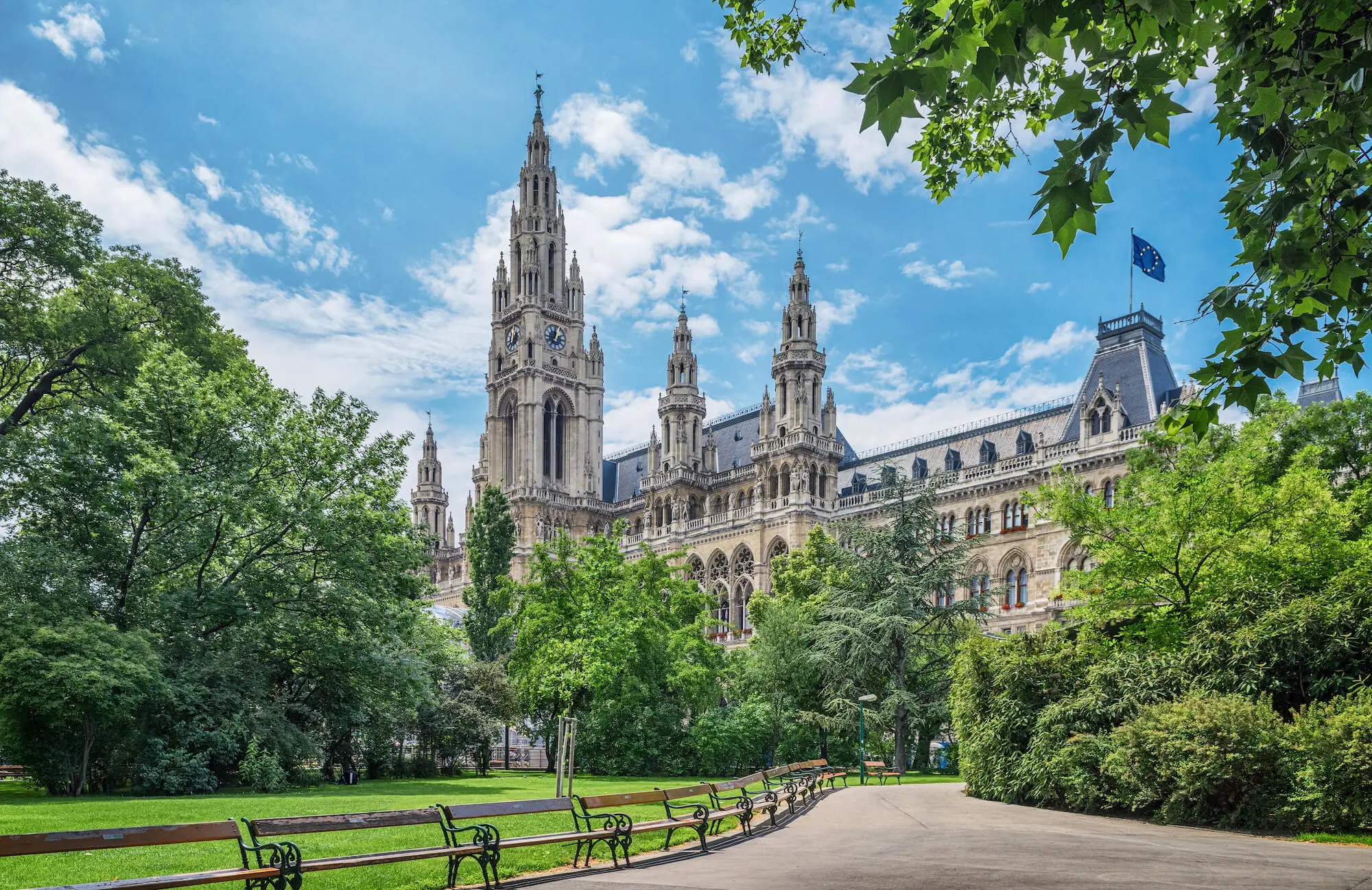
Rathaus (City Hall)
 Highlight of Ring Street
Highlight of Ring StreetGet in touch with the local vibe at the Rathausplatz, a huge square in front of the Vienna City Hall.
The 19th-century city hall was built in a fanciful neo-Gothic style with 30 million bricks. It is an important center for social life in the city, hosting balls, concerts, and other events. The square in front of the hall is home to activities all year long, including markets, food fairs, exhibitions, and the city's biggest Christmas Market.

Natural History Museum
 Highlight of Ring Street
Highlight of Ring StreetExplore one of the world's most important natural history collections.
The museum is a treasure trove of anthropological and archeological exhibits, including dinosaurs and other extinct animals, precious gems, and more. It also holds the famous pre-historic finds from the Austrian village of Hallstatt, where an ancient salt mine was located.

Kunsthistorisches Museum
 Highlight of Ring Street
Highlight of Ring StreetFind artistic bliss in this lavish 19th-century museum housing art collections & antiquities.
The Kunsthistorisches Museum, or Art History Museum, is one of the world's most important collections of art. It houses many masterpieces as well as ancient and classical art antiquities. Its amazing interior is worth seeing just on its own merits, and includes an incredible mural painted by Gustav Klimt.

Rathaus (City Hall)
 Highlight of Ring Street
Highlight of Ring StreetGet in touch with the local vibe at the Rathausplatz, a huge square in front of the Vienna City Hall.
The 19th-century city hall was built in a fanciful neo-Gothic style with 30 million bricks. It is an important center for social life in the city, hosting balls, concerts, and other events. The square in front of the hall is home to activities all year long, including markets, food fairs, exhibitions, and the city's biggest Christmas Market.

Natural History Museum
 Highlight of Ring Street
Highlight of Ring StreetExplore one of the world's most important natural history collections.
The museum is a treasure trove of anthropological and archeological exhibits, including dinosaurs and other extinct animals, precious gems, and more. It also holds the famous pre-historic finds from the Austrian village of Hallstatt, where an ancient salt mine was located.
prev
next

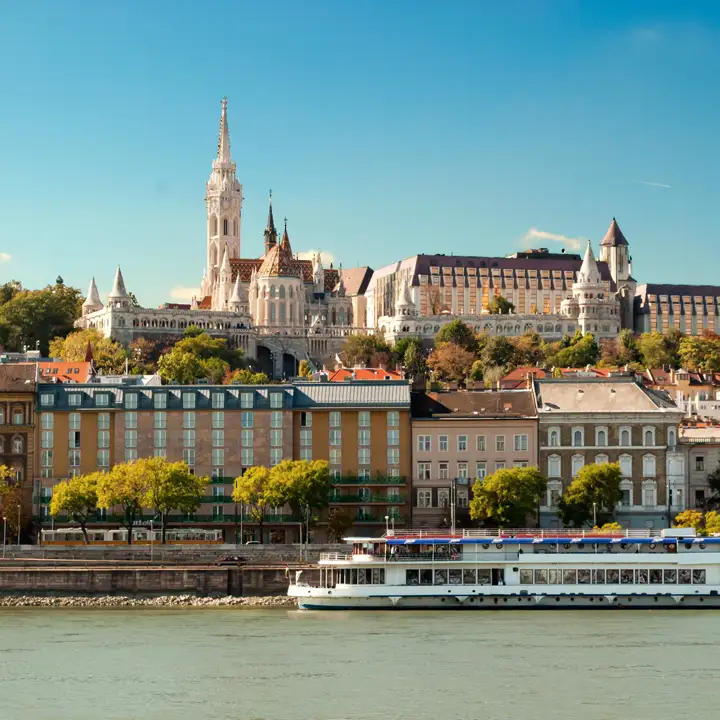
Day 6
Budapest
Day 6
Budapest




9:00 AM - 12:30 PM
Guided Walk in Budapest
During your tour you will take in a gorgeous vista of the city from the Fisherman's Bastion, explore the winding streets of the Castle District, gaze in awe at the striking interior of St. Stephen's Basilica, travel along the city's most elegant avenue and more. Along the way you will experience the city as a local does, stopping to check out intimate courtyards, enjoying a pastry and soaking in the ambiance of Budapest's most elegant cafes.

Day 6
Budapest



Day 7
Budapest
Day 7
Budapest




Morning
Andrássy Avenue
The wide, tree-lined Andrássy Avenue is Budapest's most prominent street, and is lined by imposing neo-Renaissance palaces and buildings. It is home to the breathtakingly beautiful State Opera House, making it the musical heart of Hungary. You will also find the superb House of Terror museum, which focuses on the horrors inflicted by 20th century totalitarian regimes.

State Opera House & Opera Metro Station
Experience an unforgettable visit to the incredibly lavish neo-Renaissance Hungarian State Opera House.
Show More

House of Terror Museum
Experience a chilling museum documenting the terrors of Fascism & Communism in Hungary .
Show More

State Opera House & Opera Metro Station
Experience an unforgettable visit to the incredibly lavish neo-Renaissance Hungarian State Opera House.
Show More

House of Terror Museum
Experience a chilling museum documenting the terrors of Fascism & Communism in Hungary .
Show More

State Opera House & Opera Metro Station
Experience an unforgettable visit to the incredibly lavish neo-Renaissance Hungarian State Opera House.
Show More

House of Terror Museum
Experience a chilling museum documenting the terrors of Fascism & Communism in Hungary .
Show More
prev
next

Day 7
Budapest


State Opera House & Opera Metro Station
 Highlight of Andrássy Avenue
Highlight of Andrássy AvenueExperience an unforgettable visit to the incredibly lavish neo-Renaissance Hungarian State Opera House.
The Opera House is a symbol of the Hungarian nation and is one of it's most beautiful buildings. It is among the world's finest venues in terms of beauty and acoustics. When completed in 1886, the Austro-Hungarian Emperor was said to be upset because it outshone the opera house of Vienna. You can experience a performance here, or take an entertaining guided tour.

House of Terror Museum
 Highlight of Andrássy Avenue
Highlight of Andrássy AvenueExperience a chilling museum documenting the terrors of Fascism & Communism in Hungary .
This somber and foreboding interactive museum tells the tragic story of Hungary's totalitarian experiences under Fascism and Communism. It is located in the headquarters building of the Arrow Cross Party (Hungarian fascists), and later the Communist secret police after WWII. Hear stories of those who suffered as well as their oppressors, and wander the dank cells where victims were tortured and interrogated.

State Opera House & Opera Metro Station
 Highlight of Andrássy Avenue
Highlight of Andrássy AvenueExperience an unforgettable visit to the incredibly lavish neo-Renaissance Hungarian State Opera House.
The Opera House is a symbol of the Hungarian nation and is one of it's most beautiful buildings. It is among the world's finest venues in terms of beauty and acoustics. When completed in 1886, the Austro-Hungarian Emperor was said to be upset because it outshone the opera house of Vienna. You can experience a performance here, or take an entertaining guided tour.

House of Terror Museum
 Highlight of Andrássy Avenue
Highlight of Andrássy AvenueExperience a chilling museum documenting the terrors of Fascism & Communism in Hungary .
This somber and foreboding interactive museum tells the tragic story of Hungary's totalitarian experiences under Fascism and Communism. It is located in the headquarters building of the Arrow Cross Party (Hungarian fascists), and later the Communist secret police after WWII. Hear stories of those who suffered as well as their oppressors, and wander the dank cells where victims were tortured and interrogated.

State Opera House & Opera Metro Station
 Highlight of Andrássy Avenue
Highlight of Andrássy AvenueExperience an unforgettable visit to the incredibly lavish neo-Renaissance Hungarian State Opera House.
The Opera House is a symbol of the Hungarian nation and is one of it's most beautiful buildings. It is among the world's finest venues in terms of beauty and acoustics. When completed in 1886, the Austro-Hungarian Emperor was said to be upset because it outshone the opera house of Vienna. You can experience a performance here, or take an entertaining guided tour.

House of Terror Museum
 Highlight of Andrássy Avenue
Highlight of Andrássy AvenueExperience a chilling museum documenting the terrors of Fascism & Communism in Hungary .
This somber and foreboding interactive museum tells the tragic story of Hungary's totalitarian experiences under Fascism and Communism. It is located in the headquarters building of the Arrow Cross Party (Hungarian fascists), and later the Communist secret police after WWII. Hear stories of those who suffered as well as their oppressors, and wander the dank cells where victims were tortured and interrogated.
prev
next


Day 8
Depart Budapest
Day 8
Depart Budapest

To Be Determined
Taxi Transfer to Airport
Budapest has one main airport, Budapest Ferenc Liszt International Airport, where almost all visitors depart. Your hotel can arrange a reliable taxi (there is no Uber in Budapest). You can also arrange a private transfer. If you are picked up about two hours and forty-five minutes before your departure time, you should arrive at the airport with about two hours to spare, depending on traffic. If you are leaving during rush hour, you may want to budget an extra fifteen to thirty minutes.

Day 8
Depart Budapest


What's Included In Enchanting Central Europe Trip

Pre-Paid Tours and Activities:
- Prague Castle & Royal Route Guided Walk
- Guided Walk through Vienna's Inner City
- Best of Budapest: Half-Day Walking Tour of Highlights & Hidden Finds

Pre-Paid Transportation:
- 2nd Class Train Tickets from Prague to Vienna
- 2nd Class Train Tickets from Vienna to Budapest
- Public Transport Tickets for Vienna
- Private Transfer from the Budapest Rail Station

Accommodation:
- 2 nights at a hotel of your choice in Prague
- 2 nights at a hotel of your choice in Vienna
- 3 nights at a hotel of your choice in Budapest

Go Real Travel Mobile App:
- Itinerary Plan & Reservations Info
- Points of Interest
- Detailed Travel Information
- Maps & Directions
Other Trips You May Like

10 Days
From$2249USD
Perfect Whirlwind Itinerary to Prague, Salzburg, Vienna & Budapest

Czech Republic, Austria, Hungary

12 Days
From$2290USD
Enchanting Central Europe: Prague, Salzburg, Vienna, and Budapest

Czech Republic, Austria, Hungary

12 Days
From$2350USD

10 Days
From$1799USD
Central European Rhapsody: A Cultural and Historical Odyssey

Czech Republic, Austria, Hungary

14 Days
From$2350USD
Imperial Elegance: Prague, Vienna and Budapest Itinerary 14 Days

Czech Republic, Austria, Hungary

7 Days
From$1695USD

15 Days
From$2750USD
Prague, Vienna, and Budapest, 15 Days of Must See Sights & Local Scenes

Czech Republic, Austria, Hungary

12 Days
From$2675USD
Jewish Heritage and Scenic Rivers: A Journey through Prague, Vienna, and Budapest

Hungary, Austria, Czech Republic

12 Days
From$2200USD
A 12-Day Prague, Vienna, Budapest, and Bratislava Itinerary

Czech Republic, Austria, Slovakia, Hungary

10 Days
From$2249USD
Perfect Whirlwind Itinerary to Prague, Salzburg, Vienna & Budapest

Czech Republic, Austria, Hungary

12 Days
From$2290USD
Enchanting Central Europe: Prague, Salzburg, Vienna, and Budapest

Czech Republic, Austria, Hungary

12 Days
From$2350USD

10 Days
From$1799USD
Central European Rhapsody: A Cultural and Historical Odyssey

Czech Republic, Austria, Hungary

14 Days
From$2350USD
Imperial Elegance: Prague, Vienna and Budapest Itinerary 14 Days

Czech Republic, Austria, Hungary

7 Days
From$1695USD

15 Days
From$2750USD
Prague, Vienna, and Budapest, 15 Days of Must See Sights & Local Scenes

Czech Republic, Austria, Hungary

12 Days
From$2675USD
Jewish Heritage and Scenic Rivers: A Journey through Prague, Vienna, and Budapest

Hungary, Austria, Czech Republic

12 Days
From$2200USD
A 12-Day Prague, Vienna, Budapest, and Bratislava Itinerary

Czech Republic, Austria, Slovakia, Hungary
prev
next
Featured Blogs
prev
next
Our Customers Say It Best
Marianne Strydom, Paarl, South Africa
I just wanted to thank you for organizing an amazing trip for me – I packed in so much in such a short period of time and everything was just perfect. The way you do things makes it possible to really get to know the destination, which for me as a travel agent could not have been better. 

Otto Chuy, Los Angeles, California
I am still surprised how everything worked as planned, without a hitch. All instructions in your itinerary were precise and correct. Your suggestions and comments in each of the locations we went to were very helpful. All your guides, without exception, were wonderful and exactly on time. 

Malini Dutta, Boston, Massachusetts
We can't thank you enough for the detailed plans, maps, and suggestions. It really felt that someone was holding our hands and showing us around. We had all the excitement of discovering foreign lands, with none of the problems that can happen while negotiating unfamiliar places. In fact, all the cities felt like home within a few hours of arriving and exploring. 

Bev and Mark Frankel, Williamsburg, Virginia
We could not be more pleased with Go Real Travel! You took the guess work out of things like public transport but still managed to allow us the freedom to tour as we wanted. Our guides were exceptional and every time I saw a Viking Cruise tour of 25 people, I realized the quality experience we were getting with Go Real. 

Marianne Strydom, Paarl, South Africa
I just wanted to thank you for organizing an amazing trip for me – I packed in so much in such a short period of time and everything was just perfect. The way you do things makes it possible to really get to know the destination, which for me as a travel agent could not have been better. 

Otto Chuy, Los Angeles, California
I am still surprised how everything worked as planned, without a hitch. All instructions in your itinerary were precise and correct. Your suggestions and comments in each of the locations we went to were very helpful. All your guides, without exception, were wonderful and exactly on time. 

Malini Dutta, Boston, Massachusetts
We can't thank you enough for the detailed plans, maps, and suggestions. It really felt that someone was holding our hands and showing us around. We had all the excitement of discovering foreign lands, with none of the problems that can happen while negotiating unfamiliar places. In fact, all the cities felt like home within a few hours of arriving and exploring. 

Bev and Mark Frankel, Williamsburg, Virginia
We could not be more pleased with Go Real Travel! You took the guess work out of things like public transport but still managed to allow us the freedom to tour as we wanted. Our guides were exceptional and every time I saw a Viking Cruise tour of 25 people, I realized the quality experience we were getting with Go Real. 



Explore cities in more detail
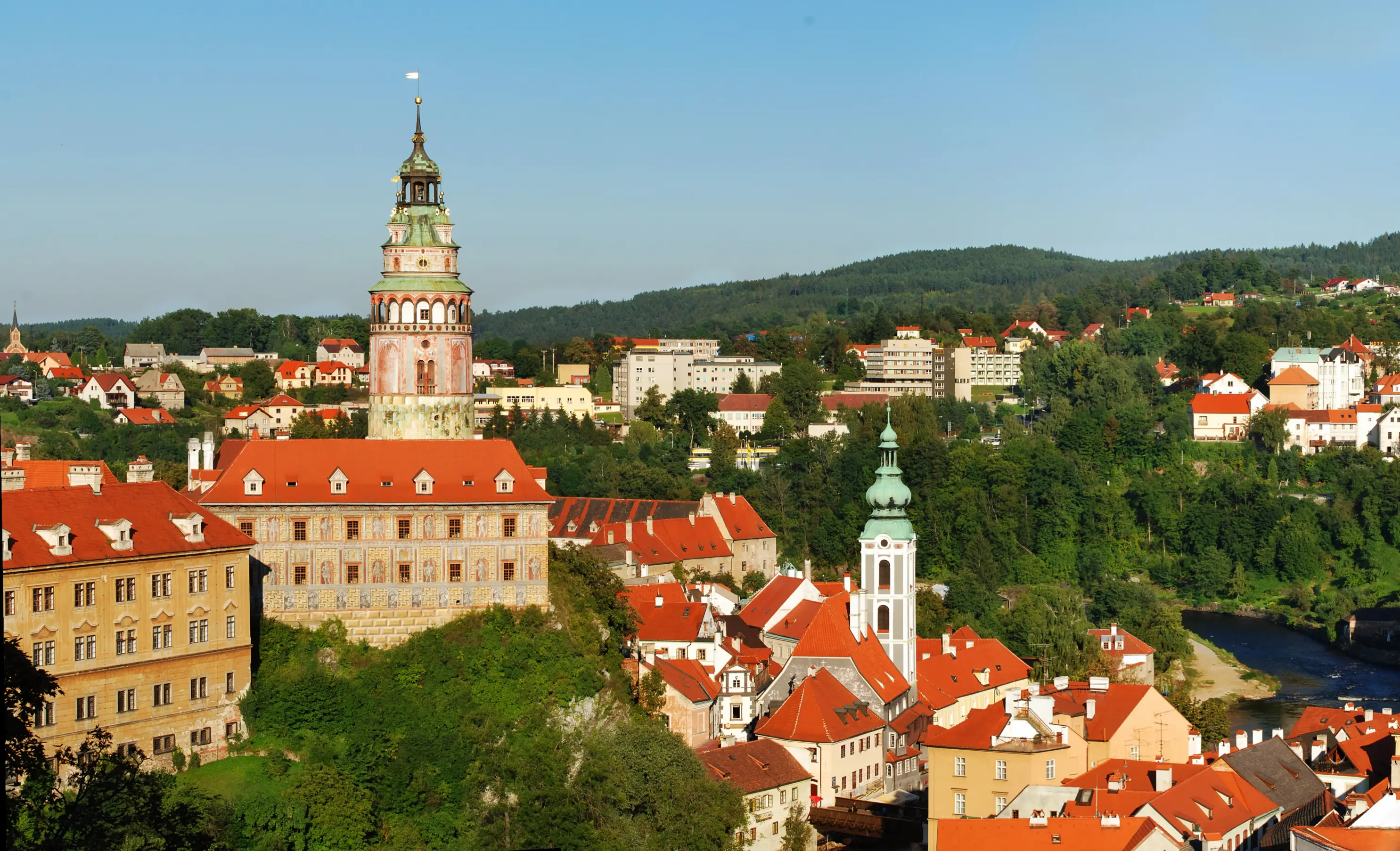
Cesky Krumlov
Cesky Krumlov is a charming little town in South Bohemia. It might be small, but it’s full of whimsical character and mystery. Walking through the narrow streets and across the bridge, the views of the medieval Cesky Krumlov Castle will take your breath away. At night, street musicians serenade visitors on the bridge where you can dance beneath the stars and the watchful eye of the magnificent tower. Dozens of unique local artisan shops, cafes, and restaurants are woven among the winding streets. In the summer, the city is lush with life and greenery. Rafters race down the river, stopping in the center along the way to enjoy a hearty meal before continuing their journey. In the winter, the main square transforms into a magnificent Christmas market and light blankets of snow cover the rooftops. This quaint little town will exceed your expectations and you may never want to leave.

Learn About Cesky Krumlov
Build Cesky Krumlov Trip

Dresden
Nearly every wall and rooftop in Dresden seems to be finished with a flourish. Defined by its ornamental baroque architecture, a power statement of Saxon royalty, Dresden is made all the more miraculous considering the city was leveled by firebombing in WWII. After the war, the city was reconstructed, brick by painstaking brick. Even under East German-Soviet rule, which usually eschewed frivolous design, buildings like the Semper Opera House were pieced back to their former glory. Restoration of the majestic Zwinger Palace and bell domed Church of Our Lady slowly followed, with the Frauenkirche only fully repaired in 2005. Arguably there is no other city in Europe that cherishes its hard-won architecture as much as Dresden. Although it is a compact city, so many of its buildings will stop you in your tracks that architecture fans will easily lose a whole day in the Old Town area. Especially during the winter months, Dresden sparkles with a joyous, uplifting ambiance. The city is recognized as having the best-ever Christmas market in all of Europe. Between the twinkling lights, the scent of hot wine and gingerbread, and the towering Christmas tree, it’s worth going out of your way to see Dresden at this time of year.

Learn About Dresden
Build Dresden Trip

Nuremberg
One of the most authentic, storied German destinations, Nuremberg's picturesque old town, glorious castle, and buzzing Christmas Market makes this city a time-true classic. The ideal gateway to old Bavaria, Nuremberg offers a primer in German history before you embark on the lovely journey through old Bavaria, known as the Romantic Road. Considered the capital of the Holy Roman Empire in the middle ages, Nuremberg would have felt like the center of the world as a procession of kings and emperors passed through its magnificent gates. When the German Renaissance came, Nuremberg was at its heart. Albrecht Dürer, the great German master artist, was born here, and Martin Luther called Nuremberg Germany's 'eyes and ears'. Skip forward a few centuries, and the city took a dark turn, as Nuremberg became a gathering point for the German National Socialists. Slightly outside of town, you can still find the Nazi Party Rallying Grounds, a sobering reminder of the not so distant past. If it all gets too heavy, you can end the day with a glass of rotbier (red beer) and mull it over. Nuremberg is a must-see for anyone who wants to delve into Germany's past.

Learn About Nuremberg
Build Nuremberg Trip
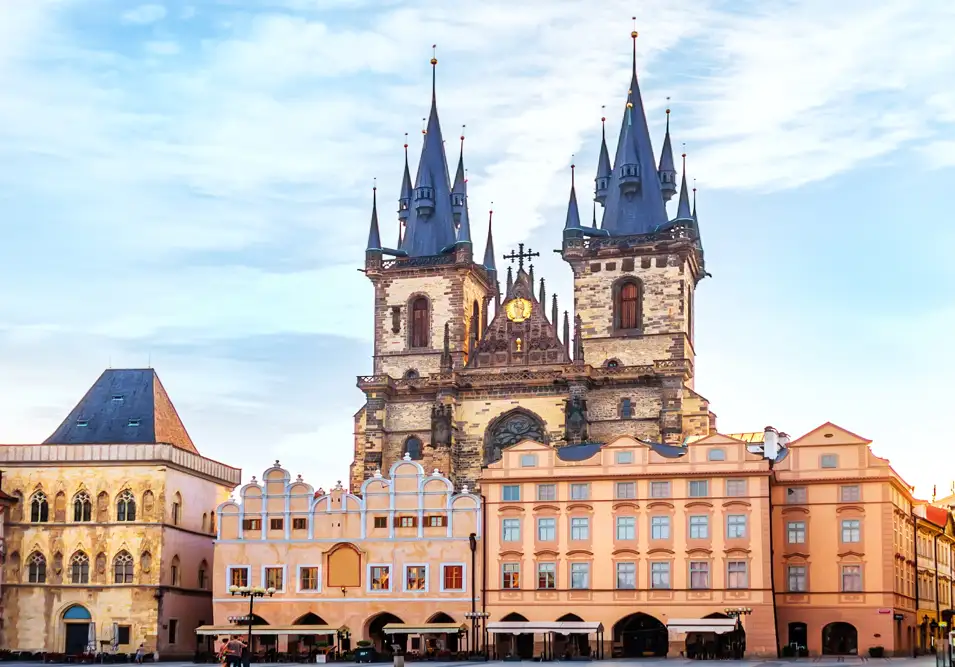
Prague
The city of Prague is indisputably the gem of Central Europe. Full of history, culture, and classic Czech pubs around every corner, Prague is teeming with nooks and crannies just waiting to be discovered. The narrow cobblestone streets and warm red rooftops give the city a homey feel, while the well-preserved medieval architecture transports you back in time. Walking across the Charles Bridge with the view of the Prague Castle will make you feel like you’re living in a fairytale, and you might as well be. As an up-and-coming destination, Prague is a perfect mix of classic and modern. New trendy cafes and bistros are always popping up, and you can always find a group of lively locals chowing down on goulash and quaffing pivo (the best beer in Europe!) at traditional Czech restaurants across the city. The clash of modernity and tradition, preservation and innovation, gives this city a mysterious air that you won’t soon forget.

Learn About Prague
Build Prague Trip
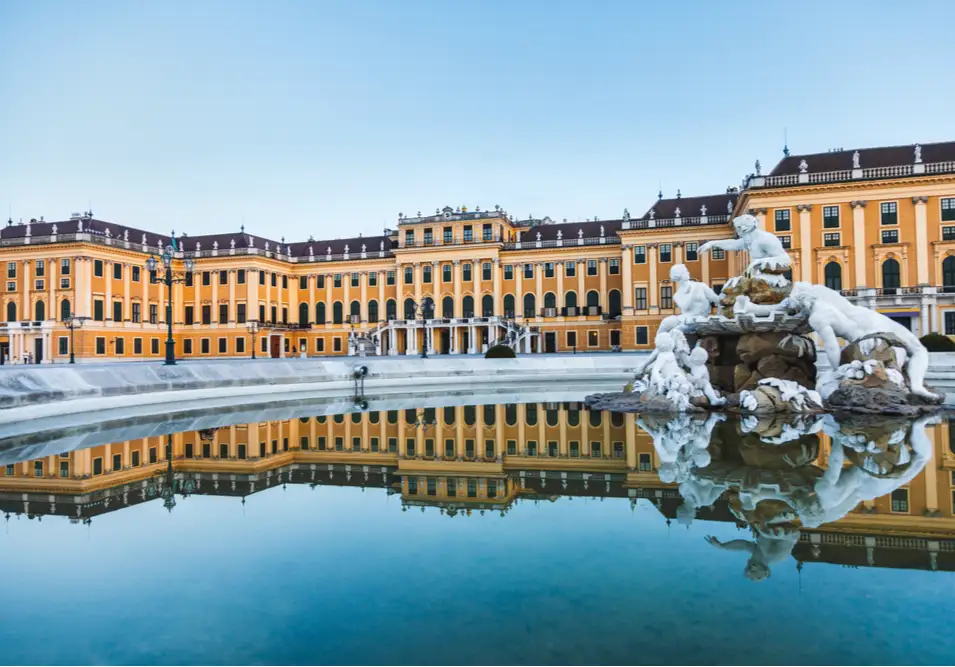
Vienna
Artistic and musical, historical and elegant, Vienna is the definition of class. The seat of the Habsburg monarchy for over six centuries, it's no wonder this city is still fit for royalty. Baroque buildings and imperial palaces dominate the cityscape, while locals stride gracefully through the streets, likely on their way to a classical music concert or art exhibition. Visitors from all over the world flock to Schonbrunn Palace, historical museums, and local eateries for authentic Viennese schnitzel. Vienna is also home to world-class wining and dining. Famous dishes include Wiener schnitzel, Tafelspitz (prime boiled beef), and apfelstrudel (apple strudel), all of which pair well with a glass of fine Austrian wine. No matter how long you spend in Vienna, you'll leave with a new appreciation for the finer things in life.

Learn About Vienna
Build Vienna Trip
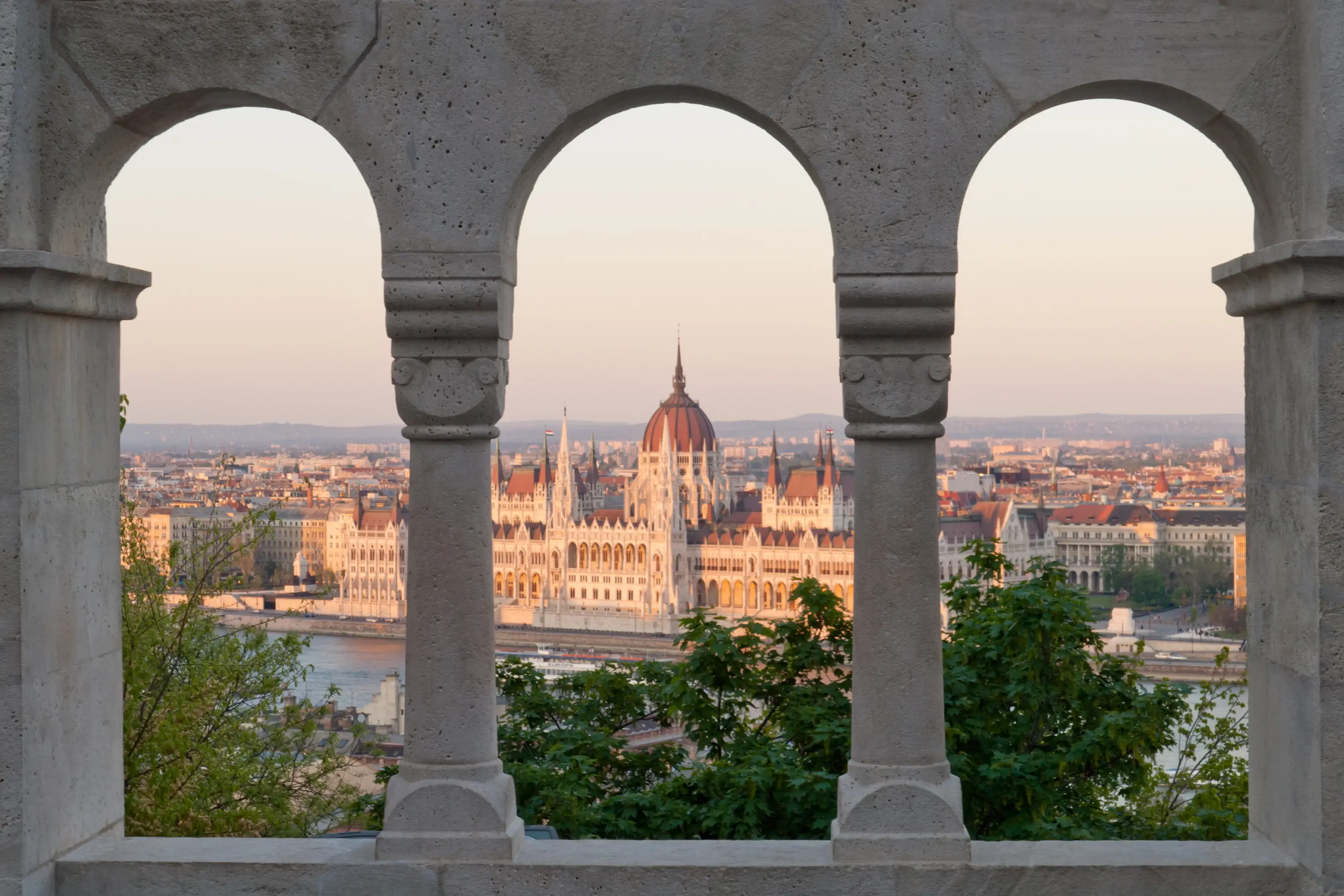
Budapest
Situated at the heart of Europe, Budapest is the capital of Hungary, appropriately named 'The Pearl of the Danube,' for its fixating and almost haunting beauty. Formerly two separate cities, Buda and Pest were forged into one by time, occupation, and the eight bridges that anchor them together today. From the Romans to the Communists, each occupier left its flavor profile in Budapest, evident in the famous spicy Hungarian stew known as 'goulash.' Budapest is a melting pot of history, culture, and taste, from the magnificent Baroque and neo-Gothic architecture to the Turkish thermal baths. After a long day of sightseeing, treat yourself to a glass of Tokaj, what King Louis XIV of France referred to as the "Wine of Kings, King of Wines". Budapest has a flavor to satisfy any taste.

Learn About Budapest
Build Budapest Trip

Cesky Krumlov
Cesky Krumlov is a charming little town in South Bohemia. It might be small, but it’s full of whimsical character and mystery. Walking through the narrow streets and across the bridge, the views of the medieval Cesky Krumlov Castle will take your breath away. At night, street musicians serenade visitors on the bridge where you can dance beneath the stars and the watchful eye of the magnificent tower. Dozens of unique local artisan shops, cafes, and restaurants are woven among the winding streets. In the summer, the city is lush with life and greenery. Rafters race down the river, stopping in the center along the way to enjoy a hearty meal before continuing their journey. In the winter, the main square transforms into a magnificent Christmas market and light blankets of snow cover the rooftops. This quaint little town will exceed your expectations and you may never want to leave.

Learn About Cesky Krumlov
Build Cesky Krumlov Trip

Dresden
Nearly every wall and rooftop in Dresden seems to be finished with a flourish. Defined by its ornamental baroque architecture, a power statement of Saxon royalty, Dresden is made all the more miraculous considering the city was leveled by firebombing in WWII. After the war, the city was reconstructed, brick by painstaking brick. Even under East German-Soviet rule, which usually eschewed frivolous design, buildings like the Semper Opera House were pieced back to their former glory. Restoration of the majestic Zwinger Palace and bell domed Church of Our Lady slowly followed, with the Frauenkirche only fully repaired in 2005. Arguably there is no other city in Europe that cherishes its hard-won architecture as much as Dresden. Although it is a compact city, so many of its buildings will stop you in your tracks that architecture fans will easily lose a whole day in the Old Town area. Especially during the winter months, Dresden sparkles with a joyous, uplifting ambiance. The city is recognized as having the best-ever Christmas market in all of Europe. Between the twinkling lights, the scent of hot wine and gingerbread, and the towering Christmas tree, it’s worth going out of your way to see Dresden at this time of year.

Learn About Dresden
Build Dresden Trip

Nuremberg
One of the most authentic, storied German destinations, Nuremberg's picturesque old town, glorious castle, and buzzing Christmas Market makes this city a time-true classic. The ideal gateway to old Bavaria, Nuremberg offers a primer in German history before you embark on the lovely journey through old Bavaria, known as the Romantic Road. Considered the capital of the Holy Roman Empire in the middle ages, Nuremberg would have felt like the center of the world as a procession of kings and emperors passed through its magnificent gates. When the German Renaissance came, Nuremberg was at its heart. Albrecht Dürer, the great German master artist, was born here, and Martin Luther called Nuremberg Germany's 'eyes and ears'. Skip forward a few centuries, and the city took a dark turn, as Nuremberg became a gathering point for the German National Socialists. Slightly outside of town, you can still find the Nazi Party Rallying Grounds, a sobering reminder of the not so distant past. If it all gets too heavy, you can end the day with a glass of rotbier (red beer) and mull it over. Nuremberg is a must-see for anyone who wants to delve into Germany's past.

Learn About Nuremberg
Build Nuremberg Trip

Prague
The city of Prague is indisputably the gem of Central Europe. Full of history, culture, and classic Czech pubs around every corner, Prague is teeming with nooks and crannies just waiting to be discovered. The narrow cobblestone streets and warm red rooftops give the city a homey feel, while the well-preserved medieval architecture transports you back in time. Walking across the Charles Bridge with the view of the Prague Castle will make you feel like you’re living in a fairytale, and you might as well be. As an up-and-coming destination, Prague is a perfect mix of classic and modern. New trendy cafes and bistros are always popping up, and you can always find a group of lively locals chowing down on goulash and quaffing pivo (the best beer in Europe!) at traditional Czech restaurants across the city. The clash of modernity and tradition, preservation and innovation, gives this city a mysterious air that you won’t soon forget.

Learn About Prague
Build Prague Trip

Vienna
Artistic and musical, historical and elegant, Vienna is the definition of class. The seat of the Habsburg monarchy for over six centuries, it's no wonder this city is still fit for royalty. Baroque buildings and imperial palaces dominate the cityscape, while locals stride gracefully through the streets, likely on their way to a classical music concert or art exhibition. Visitors from all over the world flock to Schonbrunn Palace, historical museums, and local eateries for authentic Viennese schnitzel. Vienna is also home to world-class wining and dining. Famous dishes include Wiener schnitzel, Tafelspitz (prime boiled beef), and apfelstrudel (apple strudel), all of which pair well with a glass of fine Austrian wine. No matter how long you spend in Vienna, you'll leave with a new appreciation for the finer things in life.

Learn About Vienna
Build Vienna Trip

Budapest
Situated at the heart of Europe, Budapest is the capital of Hungary, appropriately named 'The Pearl of the Danube,' for its fixating and almost haunting beauty. Formerly two separate cities, Buda and Pest were forged into one by time, occupation, and the eight bridges that anchor them together today. From the Romans to the Communists, each occupier left its flavor profile in Budapest, evident in the famous spicy Hungarian stew known as 'goulash.' Budapest is a melting pot of history, culture, and taste, from the magnificent Baroque and neo-Gothic architecture to the Turkish thermal baths. After a long day of sightseeing, treat yourself to a glass of Tokaj, what King Louis XIV of France referred to as the "Wine of Kings, King of Wines". Budapest has a flavor to satisfy any taste.

Learn About Budapest
Build Budapest Trip
prev
next


 Map of Your Itinerary Route
Map of Your Itinerary Route
Zoom In to the cities to see your itinerary in more detail


 4.8
4.8 






